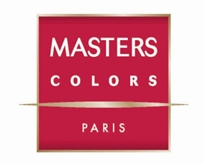The CJEU refers five 'Master' trade mark cases (L’ Oréal) back to the General Court
07-06-2018 Print this pageThe CJEU refers five 'Master' trade mark cases (L’ Oréal) back to the General Court: the General Court distorted the facts and arguments made by L’ Oréal and infringed Article 8(1)(b) of the EU Trade Mark Regulation. The Judgement of the General Court, stating that that the most distinctive element of the trade mark is the element 'Masters', is ambiguous and incomplete, the General Court's reasoning was insufficient and lacked the support of case-law.. Furthermore, the General Court failed to provide adequate reasoning why it disregarded a comparison of all the distinctive characters of the conflicting trade marks in its likelihood of confusion analysis.
Present joined cases concern five L’Oréal trade mark applications consisting of the word element ‘Master’ in combination with the words ‘Precise, Smoky, Shape, Drama and Duo’ for eye make-up. Guinot (exclusive skin care products manufacturer) filed oppositions against the application, based on the earlier French trademark MASTERS COLORS PARIS for among other things make-up.

In this proceeding before the Court L’Oréal complains that the General Court distorted the facts and L’Oréal’s arguments. The General Court stated that L’Oréal has not put forward any argument against the judgement of the Board of Appeal’s finding that the Masters-element was the most distinctive element of the earlier trade mark. The Court notes that the application lodged through the General Court contains a list of uses of the term 'master' for products and services relating to make-up presented as evidence of the ordinary, laudatory and non and non-distinctive character of this term. As suggested by EUIPO, the opinion that L'Oréal did not contest the Board of Appeal's conclusion that the element 'Masters' was the most distinctive element of the earlier trade mark, could also be interpreted in the sense that disputing the lack of distinctive character or weak distinctiveness of the element Masters” in the earlier mark was useless, because L’Oréal had not first disputed the lack of distinctive character or weak distinctiveness of all the word and figurative elements of the earlier mark other than the element "masters". There is no further justification for this interpretation. The General Court did not mention any case-law which would assist in the interpretation of its judgement, while there is General Court case-law stating that when the similar elements of two signs have a low degree of distinctiveness, the weight of those elements in the overall assessment of the distinctive character, is also low. [judgment of 22 February 2018, International Gaming Projects / EUIPO - Zitro IP (TRIPLE TURBO), T-210/17 , unpublished, EU: T: 2018: 91, paragraph 73 and the case law cited].
According to the Court, the statement of reasons for this decision are ambiguous and incomplete.
In its second plea, L’Oréal complains that in its likelihood of confusion analysis, the General Court did not take account of all the factors in the case and that the element 'Masters' was artificially isolated and used as the sole dominant element. Even if the General Court were again to find that the ‘Masters’ element is weakly distinctive, it would have to admit that the other elements of the earlier trade mark, considered as a whole, as well as the verbal element 'Precise' (and the others) attached at the ‘Master’-element of the mark applied for, the trade marks differ sufficiently and there is no risk of confusion with a reasonably attentive and well-informed audience. The General Court did not reply to this complaint and, in any event, did not give reasons for its assertion that a comparison of the characters distinctive features of the marks at issue is irrelevant to the analysis of a likelihood of confusion between those trade marks.

















